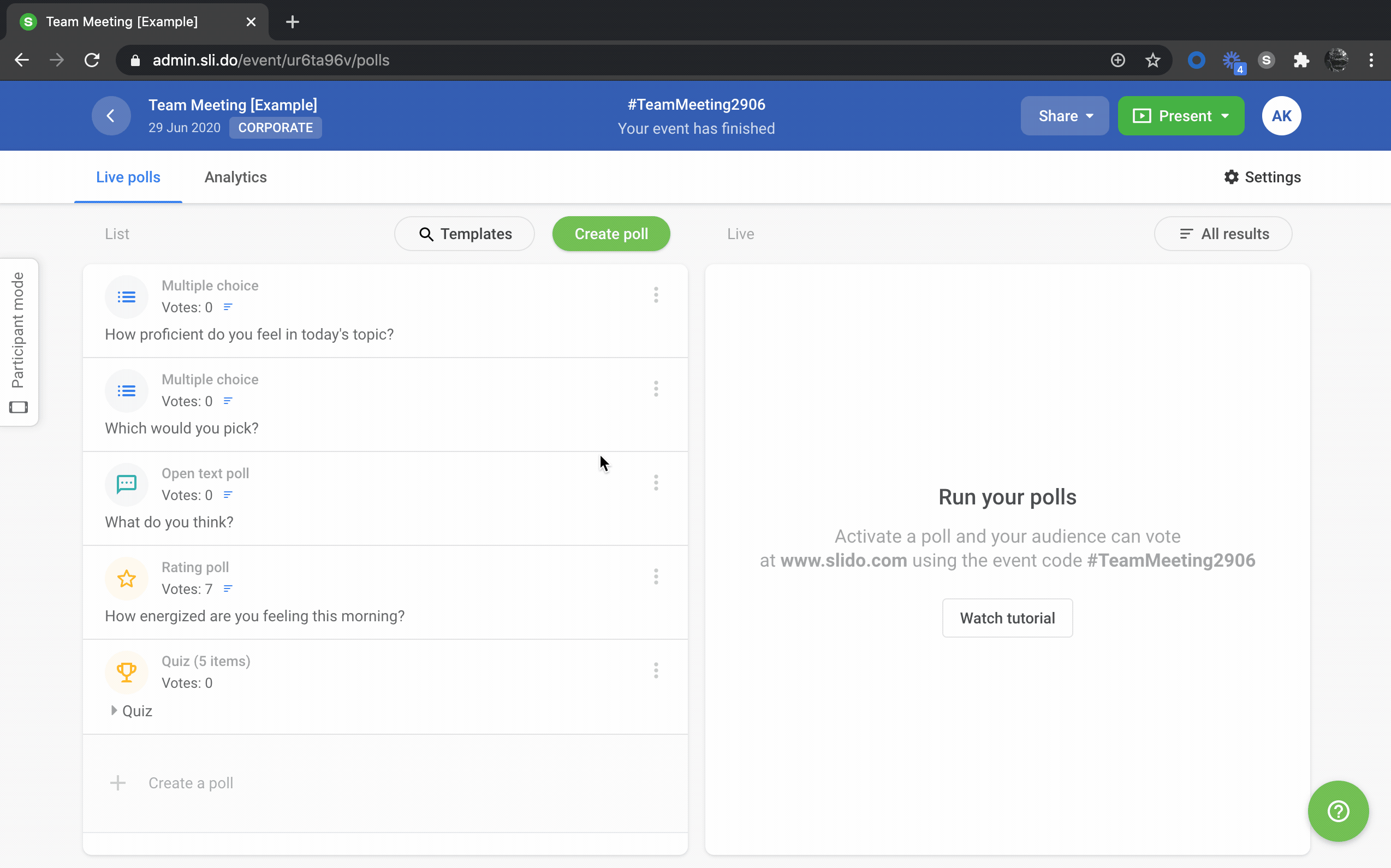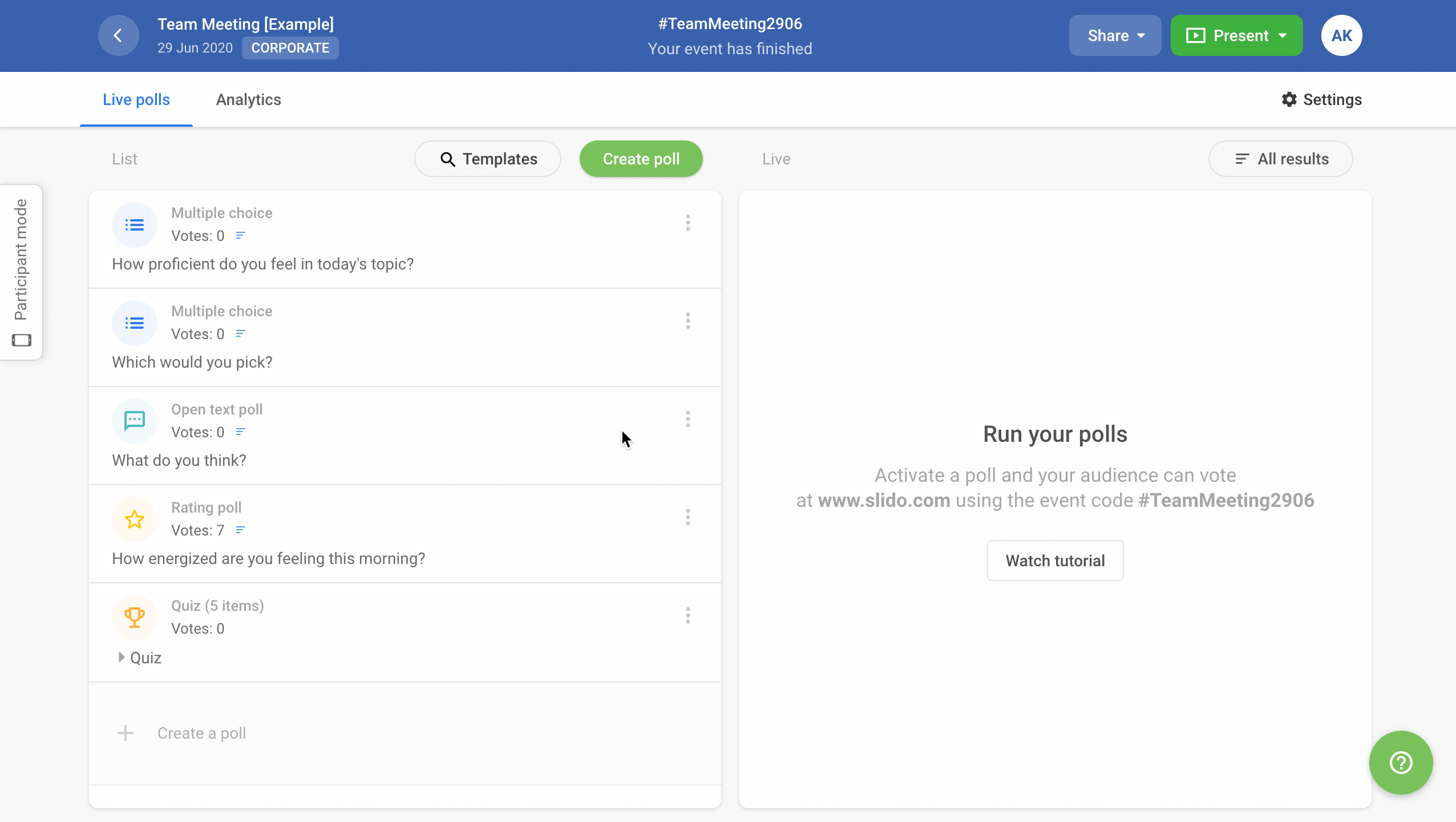Slido is gradually rolling out a new user interface. If the below steps and visuals match what you are seeing within your account, then you are using the old interface and this article is for you. If not, please see this version.
Slido offers a great and simple way to engage your remote audience during meetings, events, webinars or classes. Follow the steps in this article to learn how to give voice to your online audience.
Inside this article:
Watch a quick video or move on to the detailed guide below:
Share your screen and display Slido
To begin, launch your video conference app (such as Zoom, WebEx, MS Teams or Google Meet) and start sharing your screen.
Afterwards, open the Present mode of your Slido event from Admin, so that your remote audience can see Slido displayed during the meeting.

Have the audience join your Slido event
Once your remote audience can see Slido displayed, they can use their devices to join the event at slido.com using your event code.
Alternatively, you can also share the event link with your remote audience beforehand - clicking on it will take your participants straight to the event. The link can be found under the "Share" button in the upper right corner.

All events have a QR code available by default. You can download it and send to your audience or print on the event materials.
Both event code and QR code are visible in Present mode, so the participants can join anytime during your event.
Manage Slido
Once everyone’s joined your Slido event, you are ready to start your remote session! How to manage Slido will now depend on whether you’re:
-
running a remote session without presentation
- running a remote session with presentation
Running a remote session without a presentation
If you’re not using any presentation during your session, your setup is essentially already complete! Once you display the Slido Present mode, you can use its control panel to directly administer Slido.
From there, you can activate and deactivate polls, move to the next one, switch to Q&A or display and hide poll results. You can also highlight or archive questions directly in Present mode.
You can learn more about how to manage Slido from Present mode.
Pro tip: Manage Slido from another device
You can also use a secondary device (such as your smartphone) to manage Slido. This is especially useful if you wish to moderate your Q&A session - with your smartphone, you’ll be able to see incoming questions and approve or dismiss them.
Simply log in to Slido Admin on your smartphone, choose the remote event you’re running and manage Slido from there. All changes will immediately appear also on your displayed Slido Present mode.
Running a remote session with a presentation
If you’re using slides during your session, there are various ways how to switch between your presentation and Slido.
Use Google Slides or PowerPoint integration
If you’re using Google Slides, you can have Slido directly integrated within your presentation. Have a look at this article to set it up and then simply share the screen with your presentation during the session.
If you’re using PowerPoint, you can take a look at our integration which also allows you to have Slido directly integrated within your presentation.
Use your trackpad or keyboard
If you’re using Mac, you can simply switch between your presentation and Slido Present mode by swiping with three fingers on your trackpad, either to the left or right.
If you’re using Windows, you can use the keyboard shortcut Alt+Tab to quickly switch between presentation and Slido.
Manage Slido from another device using Switcher
You can use our app Switcher which allows you to seamlessly switch between your presentation and Slido using your smartphone as a remote control. This setup is especially useful if you wish to moderate your Q&A session - with your smartphone, you’ll also be able to see incoming questions and approve or dismiss them.
Learn more about Switcher in this Help Center article.
Curious about more?

